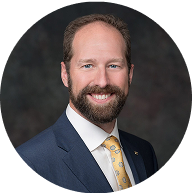I am 8 years from retirement and currently invested 100% in the C fund. When should I start moving money to the G fund and should it be based on a percentage of my current balance, or should I base it on how many years of withdrawals I want to protect once fully retired i.e. 8-10 years. – Paul
As you approach retirement, it’s important to think about how to use your Thrift Savings Plan (TSP) wisely. This article will explain some key ideas to help you get ready.
Understanding Your Retirement Income
As a federal employee under the Federal Employees Retirement System (FERS), you’ll have three main sources of retirement income:
- Basic Benefit Plan: This is your FERS pension, which gives you a monthly payment based on how long you worked and how much you earned
- Social Security: As a FERS employee, you contribute to Social Security.
- Thrift Savings Plan (TSP): This is a savings plan where you’ve been putting money during your federal service
Figuring Out How Much Money You’ll Need
Start by thinking about how much money you’ll need each month when you retire. A good place to start is looking at how much money you bring home now. For example, if you currently bring home $8,000 a month, you might want to aim for about the same amount in retirement.
Next, try to estimate how much you’ll get from your FERS pension and Social Security. Let’s say these provide you with $4,000 a month. That means you’ll need another $4,000 each month from your TSP to maintain your lifestyle. Make sure you account for the different deductions that can come out of your pension and Social Security, such as taxes, FEHB and/or Medicare premiums, etc. to arrive at your net benefit.
Making a Plan for Taking Money Out
To make sure you have enough money when you need it, consider segmenting your TSP savings into different “buckets” based on when you’ll need the money:
- Cash Bucket: Set aside enough money to cover 1 to 2 years of planned withdrawals. This could be in the TSP’s G Fund, which is meant to keep your money safe
- Income Bucket: Allocate some funds into investments that provide steady income with minimal risk. This might include bonds or other interest-paying investments.
- Growth Bucket: Invest the remaining funds in assets with growth potential, such as stocks.
Why Use This Plan?
By organizing your savings this way, you can better manage market fluctuations. The cash and income buckets ensure you have money available for near-term needs, while the growth bucket allows for potential long-term gains.
When to Start Changing Your TSP Investments
When you’re about five years away from retirement, consider shifting your TSP investments to align with this bucket strategy. This helps protect the money you’ll need soon while still allowing long-term investments to grow.
Be Mindful of the Proportionate Distribution Rule in the TSP
As much as we love the TSP, it does have its limitations when it comes to distributions and taking money out of it. The rule we are thinking of that limits the TSP is the “proportionate distribution” rule, which says that however your investments are allocated in the TSP is exactly how those investments will be sold and distributed to you.
Let’s look at an example. Let’s say that Bob has $500,000 in his TSP, and 20% is invested in each of the 5 core funds in the TSP:
- $100,000 in the G Fund
- $100,000 in the F Fund
- $100,000 in the C Fund
- $100,000 in the S Fund
- $100,000 in the I Fund
Bob decides he wants to take out $20,000 as a lump sum in retirement. The TSP would sell proportionately $4,000 (20%) out of the G Fund, $4,000 (20%) out of the F Fund, etc. The downside is that you don’t have control over this, and this proportionate distribution rule decides for you.
One alternative to consider would be a transfer out of the TSP to an Individual Retirement Account (IRA) which would not be subject to the proportionate distribution rule.
Conclusion
Planning how to withdraw money from your TSP is crucial for a comfortable retirement. By understanding your income sources and structuring your savings strategically, you can create a plan that supports your financial goals. It’s always a good idea to consult with a financial advisor to tailor your strategy to your specific needs.
References

ABOUT THE AUTHOR
Micah Shilanski, CFP®, is a distinguished financial planner known for his deep commitment to providing exceptional advisory services to his clients. As the founder of Plan Your Federal Retirement, Micah has dedicated his career to helping federal employees understand and optimize their benefits to ensure a secure and prosperous retirement. His expertise is widely recognized in the industry, making him a sought-after speaker and educator on financial planning and retirement strategies.
Micah’s approach is client-centered, focusing on creating personalized strategies that address each individual’s unique needs. His work emphasizes the importance of comprehensive planning, incorporating aspects of tax strategy, investment management, and risk assessment to guide clients toward achieving their financial goals.Micah Shilanski 00:00
Well, you’ve done an excellent job of saving money getting ready for retirement, you’re seeing that wealth build and grow. And you know, you’re on the precipice of being able to financially retire. But, now the question comes, should you make any changes in your TSP? How do you need to set it up for withdrawals? If you’ve ever wondered the answer to that question, then stay tuned for this FERS Federal Fact Check. Hi, I’m Micah Shilanski, from Plan Your Federal Retirement and we have a great question that came in from Paul. All right. I know it’s a great question all the time. I love your guys’s questions, because we really want to help federal employees improve their retirement! Your questions are our insight into seeing what you guys are concerned about, what questions you have, what information should we provide, so I really appreciate it. Keep those comments, smash that like button. Go ahead and jump in the comments. Leave us some great comments in there we can respond as well, but keep those questions flowing would be fantastic. All right back on script. So Paul asks, he says I’m eight years from retirement currently invested 100% in the C fund. When should I start moving my money the G fund and should it be based on a percentage of my current balance? Or should it be based on how many years of withdrawals I want to protect once I’m fully retired, ie in eight to 10 years? Well, that is a fabulous question. Right? Now I’m going to tell you the way that we approach it and different people have different ideas. And of course, Paul, I don’t know your situation. So just to be clear, this isn’t investment advice. This isn’t recommendations. I’m talking about a concept right here and painting with a broad brush that you need either work with a financial advisor to really help you implement, or really understand these rules yourself to implement them. All right, all those appropriate disclosures in place, let’s dive into it. Number one, I want to start with what are we solving for? How much money a month do we want coming in? And so I like to say okay, just great starting place what your net paycheck right now? Let’s say for discussion, you’re bringing home $8,000 a month. Awesome. That’s $8,000 a month and take home pay. For simplicity, let’s say that’s both spouses, just to make my math really easy, to get $8,000 a month. So how do we replace that eight grand a month? Well, one question is going to be how much is your net pension going to be? How much is your supplement going to be? These other questions… Right? So let’s say from out of that $8,000 a month, let’s say between pension income supplement etc. you have $4,000 a month coming in. Great, well then that means we need to replace it another $4,000 a month. We need to be able to pull that from our investments. Now we start setting up our investment plan. My general rule of thumb, right it’s always a little bit different. My general rule of thumb – any money that you want to spend in the next five years doesn’t belong invest in the stock market. Why five years? 2008, 9, 10, 11, 12. It took five years for the market to get back to even, from the peak to the crash, to the recovery in 2008. Most recessions are longer than that, right? That was a depression, that was kind of a five year period. Most recessions, or corrections, are in that three years from peak to valley to recovery. But I like to err on the side of caution. So on to your question, Paul, I’m a distribution guy, not so much a percentage guy, right? Yes, those are correlated. You could look at him the same, but I’m a cash flow type of guy. So what that means is, let’s say that I wanted to have, you know, my goal was this $8,000 a month and let’s just say 4,000 of that was coming from your TSP, and you’re gonna have 4,000 of that coming from your FERS pension, just for discussion with that. And then what I’m going to do with this $8,000 a month, let me draw this on screen, sorry about that. What I’m gonna do it’s $8,000 a month I’m going to look that four grand and just for simplicity, let’s kind of gross this up and say, well, that’s 4,000 net. So, I probably need 5,000 gross, right? And IRS unfortunately is still going to be part of your retirement. So we need 5,000 a month gross. So, the first thing I’m going to do is I’m going to set up and look at my buckets. And in my buckets I want to cash bucket. And inside of my cash bucket, I want one to two years of your distributions inside a cash right? So, for it’s $5,000 a month, that’s $60,000 a year. You’re talking somewhere between 60 and $120,000 in cash. Now what do I mean by cash? I do not mean take it out of the bank, your TSP excetera, stick it in your mattress, right? That’s not what I’m referring to. I’m referring to something that is fully liquid. What is liquid? Liquid means I can access it virtually immediately with no risk of loss. That is not the C fund. Right? And Paul, I know you’re not saying it is, but you know for example, that’s not the C fund just because I can do it. That’s not a brokerage account invested in stocks that move up and down. Liquid is a money market fund. It is a bank account. It is a G fund, private equivalent, right that’s kind of our cash bucket. Then I like to see an income bucket of two to three years of money that you might need inside of here. So this would be 120,000 Oops $280,000 in there. And in the balance I’d like to see in our growth bucket. And our growth bucket, the growth the markets are going to do this. They’re going to go up and down. Right? Who knows where we are in that potential. cycle. But with our growth bucket, the biggest thing we have is time, we don’t need that money right now. So it’s not if it goes down it’s when it goes down in value -we have time to let that recover. And that’s what these other two buckets right here give us, that cash and income. Now income, this is what I like to call like fixed income, this could be bonds, this could be dividents, could be different things, something that might move a little bit, but something that doesn’t have a great risk of loss. And so this is how I create our five year window for our clients. And this is where we’ll be pulling out $5,000 a month. Unfortunately 1k in this example is gonna go to the IRS, and that would be $4,000 a month that would be coming in to you, and we kind of pull this money out. So getting back to directly your question, Paul. I like to look as I’m getting within five years of the soonest you’d want to retire. I started looking at the distributions – can we move this money over in there? Now this comes to a second question about you know, can you really, how much do you really need in order to pull out 60 grand a year out of your account? What’s a safe distribution strategy, how to invest that those are all a secondary questions that we got to be thinking about as well and making sure that’s in place. But again, to your question, I’m a dollars guy, I want to park that money in a certain place. And here’s what I know. One of my jobs as a financial advisor is when the market goes down to help my clients stay invested so it will go back up. Right? So that when that market goes back up, they have a chance to recover. If the market drops and they sell out and they say I’m gonna wait for the bottom, and the market takes off they’re gonna wait for the other correction to market keeps going and keeps going and keeps going. They’re never in that period of time. They never get back in and it’s an easy way to run out of money. So one of my jobs is to make sure we have money on the sidelines to keep our distributions coming. Keep our retirement cash flow going, so your investment money can do its investments. Paul, I hope that answers your question. Still a million other things on how to take money out of the TSP, proportionate distributions, other things to talk about as well. But I think that’s going to help, give you a little bit of a hit. Again, if you have questions like this, leave us in the comments. Shoot us an email, we love to get your guys’s feedback, and until next time, happy planning




